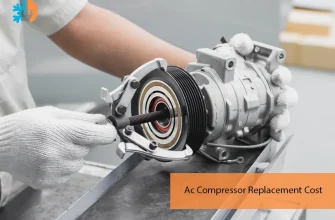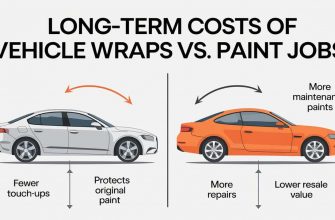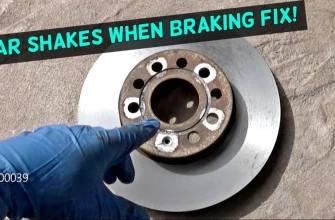In the fast-evolving world of automotive technology‚ tire design has remained a critical yet often overlooked aspect of vehicle performance and safety. However‚ recent innovations are transforming this landscape‚ heralding a new era of tire design that enhances both performance and safety. This article delves into the revolutionary tire designs that are setting new benchmarks in the automotive industry.
- The Science Behind Tire Performance
- Safety First: Innovations in Tire Design
- Environmental Considerations
- The Future of Tire Design
- The Intersection of Technology and Design
- Consumer Awareness and Education
- Challenges and Considerations
- Consumer Advocacy in Tire Innovation
- The Role of Regulations in Shaping Tire Technology
- Case Studies: Pioneering Brands Leading the Charge
- Consumer Insights: The Importance of Feedback
The Science Behind Tire Performance
Tires are the only point of contact between a vehicle and the road‚ making their design pivotal for optimal performance. Traditional tires have relied heavily on rubber compounds and tread patterns to ensure traction‚ durability‚ and stability. However‚ advancements in materials science and engineering are enabling manufacturers to push the boundaries of what tires can achieve.
- Advanced Materials: Modern tires are now being produced with synthetic materials that offer improved elasticity and resilience. These materials can withstand higher temperatures and stresses‚ leading to longer tire life and better performance.
- 3D Printing: The adoption of 3D printing technology allows for the creation of custom tire designs that can be optimized for specific driving conditions‚ enhancing grip and handling.
- Smart Technology: Incorporating sensors into tire design enables real-time monitoring of tire pressure‚ temperature‚ and tread wear. This data can help drivers maintain optimal tire performance and enhance safety.
Safety First: Innovations in Tire Design
Safety remains a paramount concern for drivers and manufacturers alike. Innovative tire designs are addressing this issue head-on by incorporating features that enhance grip and stability‚ especially in adverse weather conditions.
- All-Weather Tires: Revolutionary all-weather tire designs utilize unique tread patterns and rubber compounds that provide exceptional performance on both wet and dry surfaces‚ reducing the risk of hydroplaning.
- Run-Flat Technology: Tires designed with run-flat technology allow drivers to continue traveling for a limited distance even after a puncture‚ providing peace of mind and minimizing the danger associated with sudden tire failures.
- Improved Tread Designs: Innovative tread designs‚ such as asymmetric and directional patterns‚ enhance drainage and grip. These designs allow for better handling in wet conditions‚ significantly improving safety.
Environmental Considerations
The push for sustainable automotive solutions has also influenced tire design. Manufacturers are now focusing on eco-friendly materials and production processes that reduce the environmental impact of tires.
- Recyclable Materials: The introduction of recyclable materials in tire production not only helps reduce waste but also lowers the carbon footprint associated with tire manufacturing.
- Low Rolling Resistance: Tires designed with low rolling resistance improve fuel efficiency‚ contributing to reduced emissions and overall environmental sustainability.
The Future of Tire Design
As technology continues to advance‚ the future of tire design looks promising. The integration of artificial intelligence and machine learning into the design process will allow for even more precise optimization of tire performance and safety features.
Moreover‚ as electric vehicles gain traction‚ tire designs will evolve to meet the unique demands of these vehicles‚ including weight distribution and torque management.
Revolutionary tire designs are reshaping the automotive landscape‚ enhancing performance and safety for drivers around the globe. With ongoing advancements in materials‚ technology‚ and sustainability practices‚ the future of tire design looks not only innovative but also responsible. As we move forward‚ embracing these changes will be crucial for the evolution of safe and efficient transportation.
The Intersection of Technology and Design
As the automotive industry pivots towards a more tech-centric future‚ the integration of artificial intelligence (AI) in tire design has become a game-changer. AI algorithms can analyze vast datasets‚ enabling engineers to predict performance outcomes and optimize tire designs for various conditions. This level of precision not only enhances performance but also reduces the time and cost of development.
Furthermore‚ AI-driven simulations can replicate real-world driving scenarios‚ allowing manufacturers to test tires under extreme conditions without the need for physical prototypes. This leads to safer‚ more resilient tires that can withstand the rigors of daily use‚ all while pushing the boundaries of what is technologically possible.
Consumer Awareness and Education
With these advancements‚ there’s a growing need for consumer awareness about the importance of tire maintenance and selection. As tires evolve‚ so too does the knowledge required to choose the right product. Manufacturers are stepping up to offer educational resources‚ helping consumers understand the features and benefits of new tire technologies.
Moreover‚ the rise of digital platforms allows consumers to engage with tire manufacturers directly‚ gaining insights into the latest innovations and how they can enhance their driving experience. This engagement fosters a more informed public that can make better choices for their vehicle’s performance and safety.
Challenges and Considerations
Despite the promising advancements‚ the tire industry faces several challenges. The cost of implementing new technologies can be high‚ and consumers may be hesitant to invest in premium tire designs. Additionally‚ as the market for electric vehicles grows‚ there is a pressing need for tires specifically designed to handle the unique weight and torque characteristics of these vehicles.
Regulatory challenges also play a significant role in shaping tire design. Stricter safety and environmental regulations necessitate constant innovation‚ pushing manufacturers to balance performance with compliance. As the industry adapts to these challenges‚ collaboration among manufacturers‚ consumers‚ and regulatory bodies will be essential for driving forward the next generation of tire technology.
The revolutionary tire designs emerging today are not merely a response to consumer demands for better performance and safety; they represent a holistic approach to automotive engineering. By integrating cutting-edge materials‚ smart technology‚ and environmentally conscious practices‚ the tire industry is paving the way for a safer‚ more efficient‚ and sustainable future.
As we stand on the brink of this new era‚ it is crucial for all stakeholders—manufacturers‚ consumers‚ and policymakers—to collaborate in fostering innovation while ensuring safety and sustainability remain at the forefront. In doing so‚ we can look forward to a future where our tires not only enhance our driving experience but also contribute positively to the world around us.
Consumer Advocacy in Tire Innovation
As revolutionary tire designs continue to emerge‚ consumer advocacy groups play a crucial role in ensuring that these innovations prioritize safety and performance. These organizations work tirelessly to educate the public on the importance of tire selection and maintenance‚ advocating for transparency in marketing claims made by manufacturers. This advocacy not only empowers consumers to make informed choices but also holds companies accountable for the performance of their products.
By providing resources such as tire ratings‚ performance tests‚ and safety recommendations‚ these organizations help consumers navigate the often-overwhelming array of options available. They emphasize the significance of regular tire maintenance‚ including pressure checks and tread assessments‚ as key components in maximizing the benefits of new tire technologies. In this collaborative ecosystem‚ both consumers and manufacturers can thrive‚ ensuring that advancements in tire design translate into real-world safety and performance enhancements.
The Role of Regulations in Shaping Tire Technology
Regulatory bodies also play a pivotal role in steering the future of tire design. As environmental concerns mount and safety standards evolve‚ regulations are becoming increasingly stringent. These guidelines challenge manufacturers to innovate while adhering to safety and sustainability criteria.
For instance‚ regulations regarding noise reduction and rolling resistance are pushing manufacturers to explore new materials and designs that not only improve performance but also minimize environmental impact. This regulatory framework encourages a culture of innovation‚ where companies are motivated to invest in research and development‚ yielding tires that are safer‚ more efficient‚ and better for the planet.
Case Studies: Pioneering Brands Leading the Charge
Several pioneering brands have taken the lead in revolutionizing tire design‚ showcasing how innovation can lead to improved performance and safety. For example‚ Michelin’s introduction of the Michelin Pilot Sport 4S tire exemplifies the integration of advanced technology and performance. Its unique tread design and high-grip rubber compound offer exceptional handling and stability in both wet and dry conditions‚ making it a favorite among performance enthusiasts.
Similarly‚ Goodyear’s Assurance WeatherReady tire features a specialized tread pattern designed to enhance traction on wet and snowy roads‚ providing drivers with peace of mind during adverse weather conditions. These brands not only prioritize performance but also emphasize safety‚ demonstrating that cutting-edge technology can coexist with consumer needs.
Consumer Insights: The Importance of Feedback
As tire technology continues to evolve‚ consumer feedback becomes an invaluable resource for manufacturers. Understanding how tires perform in real-world conditions allows companies to refine their designs and address any shortcomings that may arise. Engaging with consumers through surveys‚ reviews‚ and community forums enables manufacturers to gather insights that shape future innovations.
This feedback loop fosters a sense of community between consumers and manufacturers‚ encouraging collaboration and ensuring that the end product meets the needs and expectations of drivers. As consumers become more engaged in the development process‚ they empower manufacturers to create tires that not only enhance performance but also prioritize safety and sustainability.
The road ahead for revolutionary tire design is filled with promise. As technology advances‚ a focus on performance‚ safety‚ and sustainability will define the future of the industry. By embracing innovation‚ collaborating with consumers‚ and adhering to regulatory standards‚ manufacturers can create tires that not only meet but exceed the expectations of drivers globally.
As we witness these advancements unfold‚ it is clear that the tire industry is on the brink of a transformation that prioritizes not just the driving experience but also the safety and well-being of everyone on the road. In this new era‚ every journey begins with a solid foundation—one that starts with the tires beneath us.









This article is a must-read for anyone interested in automotive technology. The future of tires looks promising with all these innovations!
Great read! I appreciate how the article breaks down complex technologies into easy-to-understand concepts. Very informative!
I never realized how much technology impacts tire performance. The section on smart technology was particularly eye-opening!
The innovations in tire design discussed here are impressive! It
This article brilliantly highlights the importance of tire design in automotive safety. The advancements mentioned are truly fascinating!